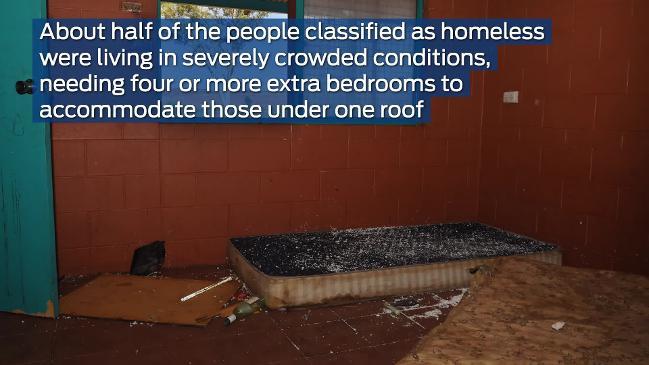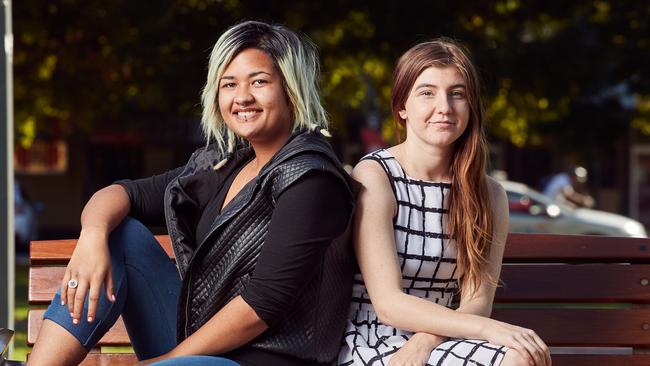Housing SA spending on average about $10,000 a day on emergency hotel and motels rooms
YOUTH homelessness in Adelaide has been compared to a hospital emergency department from which no one ever escapes.

SA News
Don't miss out on the headlines from SA News. Followed categories will be added to My News.
- Life on the edge: SA’s worsening hidden homelessness crisis
- Matt Smith: News the Hutt St centre could be forced to move should make Adelaide residents feel ashamed
- Council sends guards to Hutt St to protect traders, customers
- Census data reveals almost a quarter of homeless people have jobs
- Adelaide’s homeless problem extends beyond rough sleepers
YOUTH homelessness in Adelaide has been compared to a hospital emergency department from which no one ever escapes.
The call, from the boss of Adelaide’s frontline service provider for young homeless, comes as figures reveal the government is spending about $10,000 a day on a emergency hotel room “lottery”.
SYC chief executive Paul Edington has called for more long-term accommodation options for young people as his service has seen a 93 per cent increase in demand in the past year.
“It is not fair for them, they should be in school or looking for work,” he said,
Mr Edginton told the Sunday Mail in some instances the organisation have had to send young people aged between 16 and 24 back onto the street each and every night for an entire month because they could not find somewhere for them to stay.
His call comes as Housing SA figures, provided exclusively to the Sunday Mail, show the government agency has spent about $10,000 each day on ‘last resort’ hotel and motel rooms for South Australians needing emergency accommodation — $3.85 million a year.

Mr Edginton said kids are waiting to win the “lottery” of a hotel room, that has to be applied for and accepted or rejected each day, to determine if they will have a shower and a roof over their heads or be sleeping rough on the streets that night.
The next morning the young people are forced to get up and repeat the process again and again.
Mr Edginton said in January only 13 kids repeated the process each and every day for the entire month.
Young people in crisis reach out to SYC for support around 450 times each month but on average there are only 20 emergency shelter options per month for these young people.
“In the last 12 months we haven’t seen an increase in the number of people coming in, but we have seen a 93 per cent increase in the number of time young people have to come in,” Mr Edginton said.
“Our young people are spending every hour of every day wondering what is going to happen to them and where they are going to sleep.
“If you sustain that kind of lifestyle for any period of time you are going to attract more and more damage.”
Housing SA data shows that in the twelve months to March 31 this year 4,470 customers were assisted with a total of 24,686 nights of accommodation at a cost of $3.85 million.
A spokeswoman for Housing SA said the agency keeps data on approved emergency accommodation provided, however it does not keep data on the number of requests that are not approved.
“Housing SA has established an emergency accommodation panel of providers who supply emergency accommodation at fixed rates,” the spokeswoman said.
“To protect the safety of the vulnerable people accessing services, which may include women experiencing domestic violence, we are not able to provide the names of specific accommodation sites that are used.”
Mr Edginton said increasingly as a last resort SYC will try to get clients a hotel room, by applying to Housing SA, after all other options have been exhausted.
“It is not a swish hotel like the Intercontinental. There is no room service,” he said.
“You don’t find out until the end of the day or the early evening if you have got a room.
“The young person has to make their way there, unpack their stuff, clean, sleep, get up by 10 o’clock and come back in here and start the process again.”
Mr Edginton said the system needs through put.
“You can imagine if you let water sit still for long enough it starts to go off but if you keep it moving it stays clean and that is what the system needs,” he said.
“The system needs more access to mental health services and more beds, that is part of the answer, but it also needs movement of young people into affordable and appropriate accommodation so that they can connect back to school and work.
“To use a health analogy — we have a system where you cannot get out of the emergency room into a ward to get fixed.
“We need more beds to get you out of the emergency ward. But what we also need is more rehab. There is only so much time you should spend on the ward before you leave and get you home. You may need rehab services when you get hospital.”
PAIN, HARDSHIP BEHIND THEIR SMILES
GOOD friends Ulani, 20 and Bec, 19, look like typical young women as they laugh and joke on a park bench in Adelaide’s Light Square.
But their demeanour betrays troubled backgrounds punctuated with challenges most people twice their age have never had to endure.
Whyalla born Bec spent some time in Melbourne before moving to Adelaide, where she found herself living between her dad and then a boyfriend before ending up on the streets.
“I was only about 13 or 14 at the time,” Bec said.
“I was in a bad relationship with the person I was staying with.

“He was older than me. He used to hurt me all the time. I was on the street for about two years. It is very hard on the streets as a female because you have to find somewhere safe to sleep. It is pretty nerve racking.”
A few years ago Bec and her present partner had a baby boy.
“When I was pregnant I was rough sleeping because I didn’t have anyone that wanted to take me in,” she said. “It was pretty emotional for us at the time.
“We got put into a hotel for four to five weeks because we did not have anywhere else to go.”
Bec had the little boy taken from her because they were living in a youth shelter.
SYC helped her get a roof over her head courtesy of another service provider.
“It is awesome, knowing that it is my house, I can sleep there every night and I have everything I need.
“It gives me something to look forward to knowing that I can have my son come home. He is not in our care but I get to see him a lot more. He walks around and talks to me and tries to show me stuff.”
Bec now wants to be a support worker to that she can help others, a sentiment echoed by friend Ulani who has enrolled at TAFE to study women’s education so that she can work in human services.
“I am couch surfing but the conditions are really unstable,” Ulani said.
“Before then I had a supported home through HYPA (a division of SYC) but I can’t help but help others in need. So I had lots of people knocking on my door, who had nowhere to go, so I rented out my spare room and my lounge room.”
When a homeless friend from Melbourne returned to Adelaide, Ulani left her stable accommodation so that the pair could find a house together. But I did not work out and Ulani found herself homeless.
“I want stable accommodation so I can focus on my study and get where I need to be,” she said. “I want to be a successful person.” - Matt Smith


